Automated Functional Testing – Everything You Should Know (Guide)
Without software testing, the software development cycle would be much shorter—and much worse! Extensive functional testing, among other things, lets developers catch and fix bugs, improve system functionalities, and ensure that any new updates will integrate smoothly into the existing software.
But should you opt for manual or automated functional testing? In this article, we'll discuss everything related to automated functional testing, including its benefits, challenges, diverse types, and the steps involved in conducting functional testing.
What is Functional Testing?
Functional testing is a major stage in the software development cycle. It aims to test the functionality of software builds, mobile applications, or web applications. It involves testing each application's functions to guarantee that they're working as intended at a basic level.
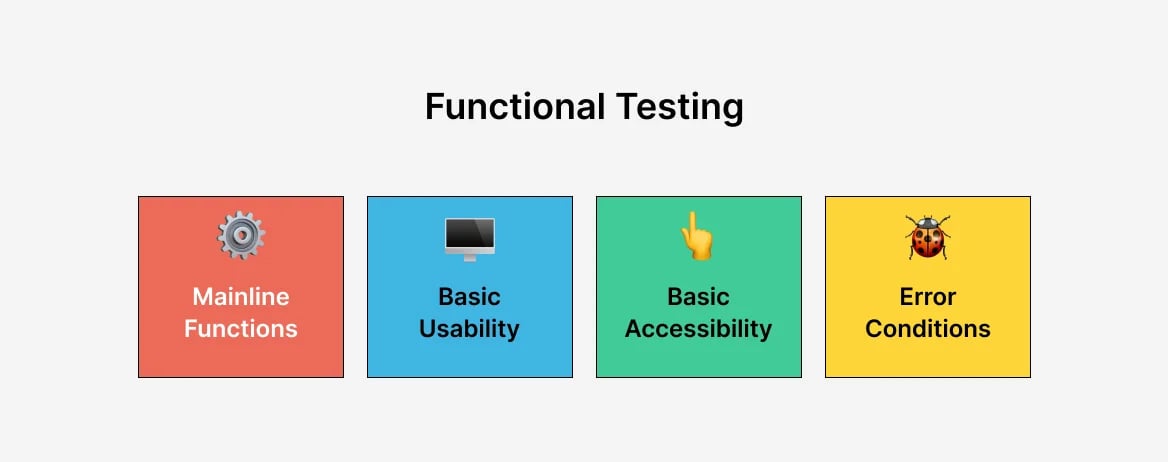
Examples of functions that are typically tested include:
- User interface
- Application database
- All APIs (application programming interfaces)
- Communications between clients and the server
- Security features, and
- Any additional components that are important to the application.
In short, functional testing is all about ensuring every component in a piece of software works well enough. It's far, far cheaper to fix defects pre-release than post-release, so investing in extensive functional testing can be the difference between making a profit and making a loss.
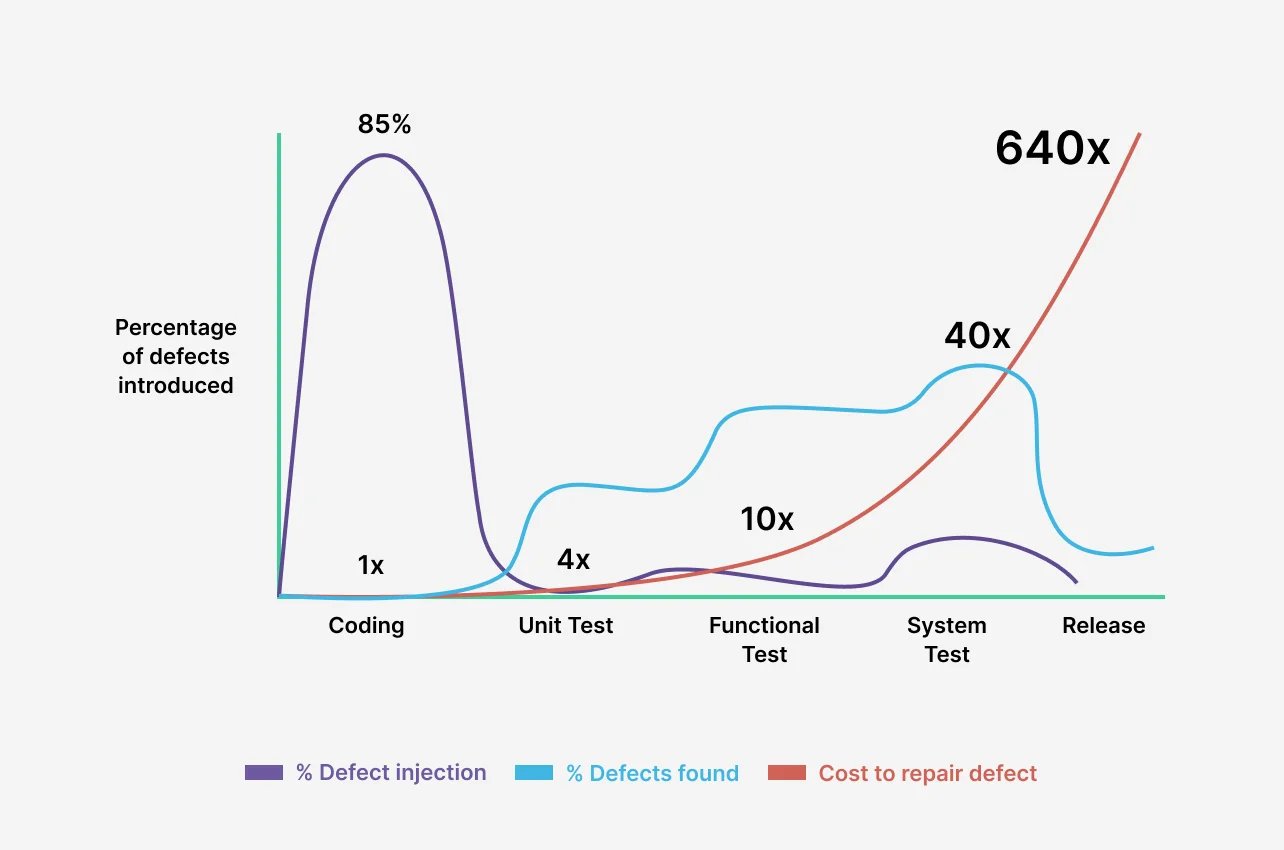
What is Automated Functional Testing?
Automated Functional Testing verifies an application's functionality using automated tools and scripts. In this approach, predefined test scripts simulate user interactions with the software's functions. Testing tools execute these scripts automatically, comparing the actual outcomes with expected results.
Automated functional testing has emerged as a prominent trend in recent years, offering significant advantages in software testing. Automation ensures consistent and regular execution of testing processes, independent of external factors. This reliability is crucial in functional testing, where maintaining strict control over internal processes yields more precise and reliable test results.
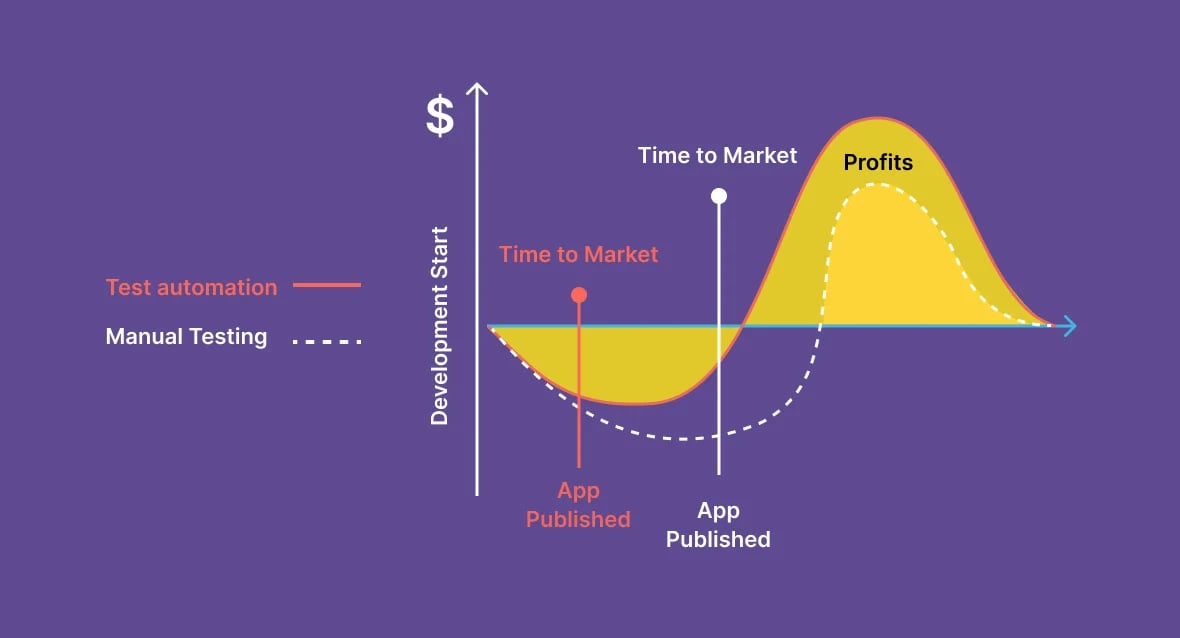
Types of Functional Testing you can automate
Now that you've grasped the concept of automated functional testing, let's delve into the different types of functional tests that can be automated.
1. Smoke Testing
Smoke testing involves checking for basic stability and usability, which means testing whether the app, system, or build can run without instantly crashing. At its most basic level, smoke testing checks for build validity.
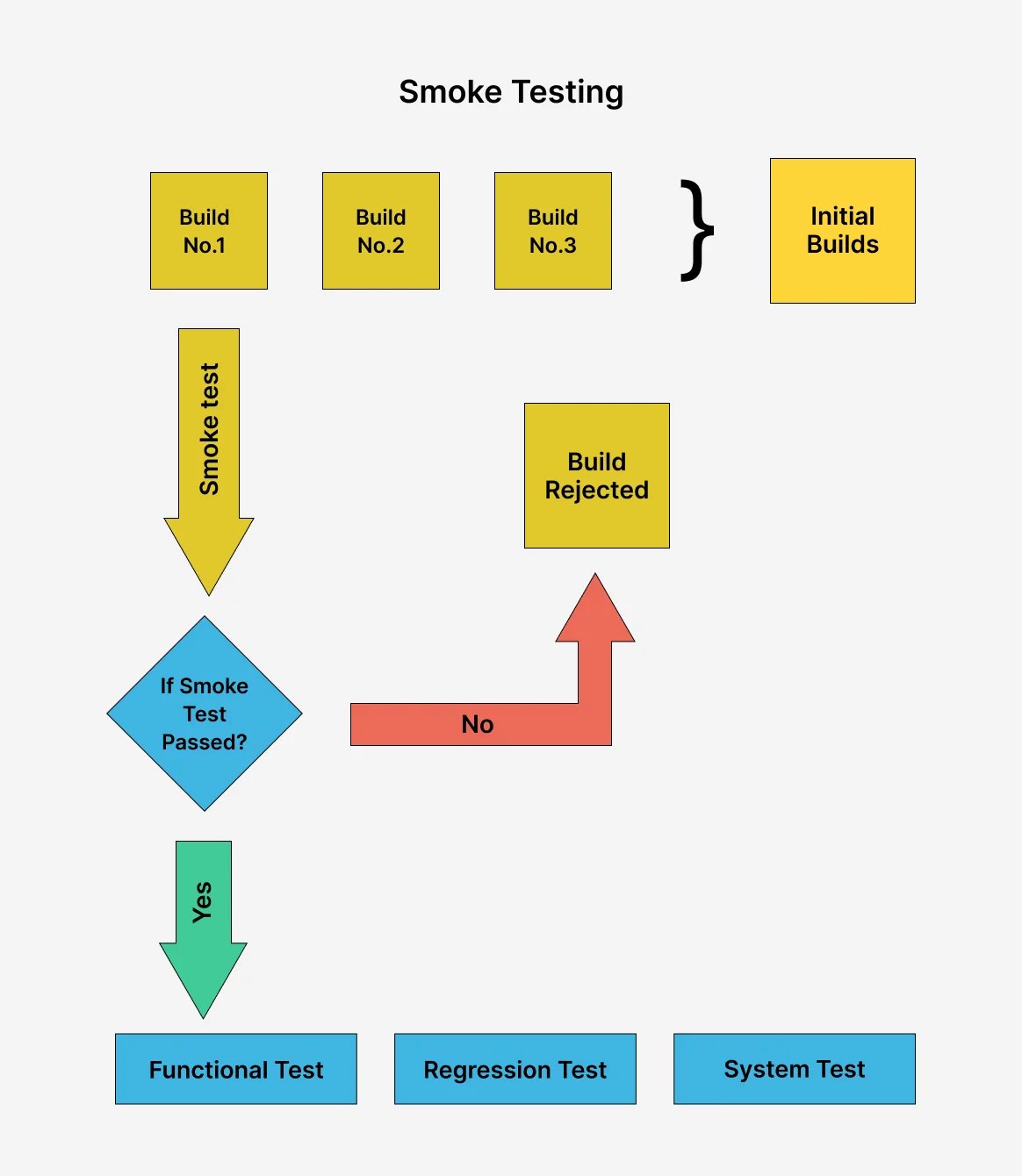
Smoke tests are a precursor to other types of testing as a result of this. They make it possible to look for smaller bugs since they guarantee that your build can run in the first place. That's why smoke testing is generally a type of continuous testing - it's a good idea to check every new build for basic functionality. Fortunately, smoke tests are quick and easy to conduct and can be automated to save even more time.
2. Regression Testing
The main aim of regression testing is to find and highlight bugs that have been injected into the build unexpectedly. In other words, regression testing involves looking for bugs that weren't anticipated at all in the original design.
-1.webp?width=1000&height=1006&name=Untitled%20(22)-1.webp)
Regression testing is also used to make sure that any problems that have been ironed out in previous versions of the build don't come back after new changes are implemented. That means that whenever an update is made to existing software, regression software verifies that problems that were fixed in older editions of the software stay, well, fixed.
Lastly, regression testing aims to stop new code modifications from negatively affecting an app's existing (and functioning) features. It ensures that the app's functionality doesn't regress, hence the name.
3. Integration Testing
The idea behind integration testing is to ensure that each module within an app is working as it should. Each module (web services, APIs, databases, and so on) should also be able to be integrated into the software application as a whole without generating any new bugs. An individual component might work well on its own, but when it's put together with a bunch of others, it might not integrate smoothly - which is precisely what integration testing aims to prevent.
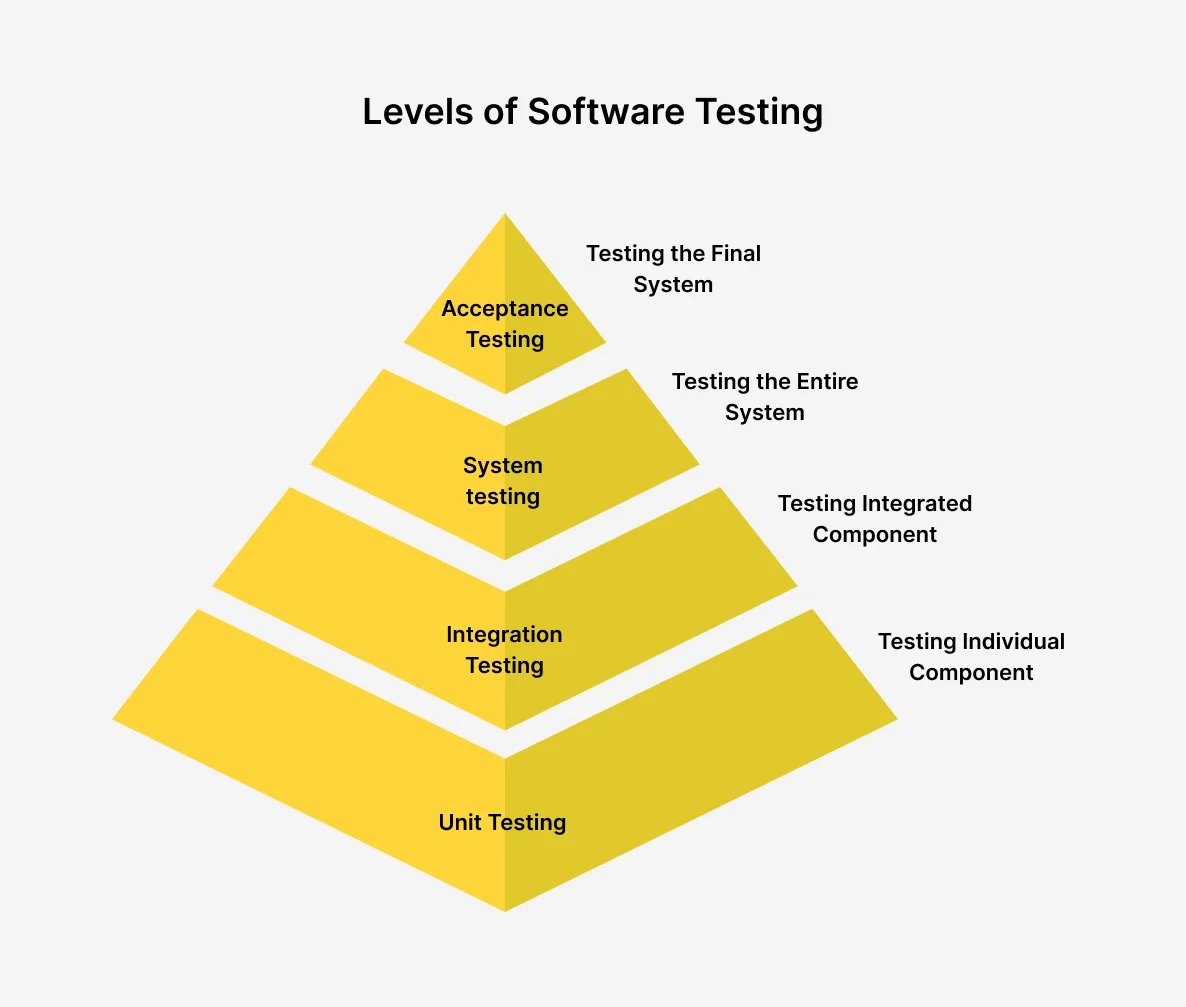
As you might imagine, this stage of the testing process deals with the application as a whole system instead of only looking at its individual components. Integration is a great way to ensure software quality, making sure it works as a unit rather than as a loose collection of functionalities.
4. Unit Testing
Unit testing is typically done by developers themselves, even though it's often one of the later steps in the testing process. During this stage, the developers will highlight components that might cause problems (for example, by creating bugs or destabilizing builds). That means that unit testing supplements and supports other types of functional tests.
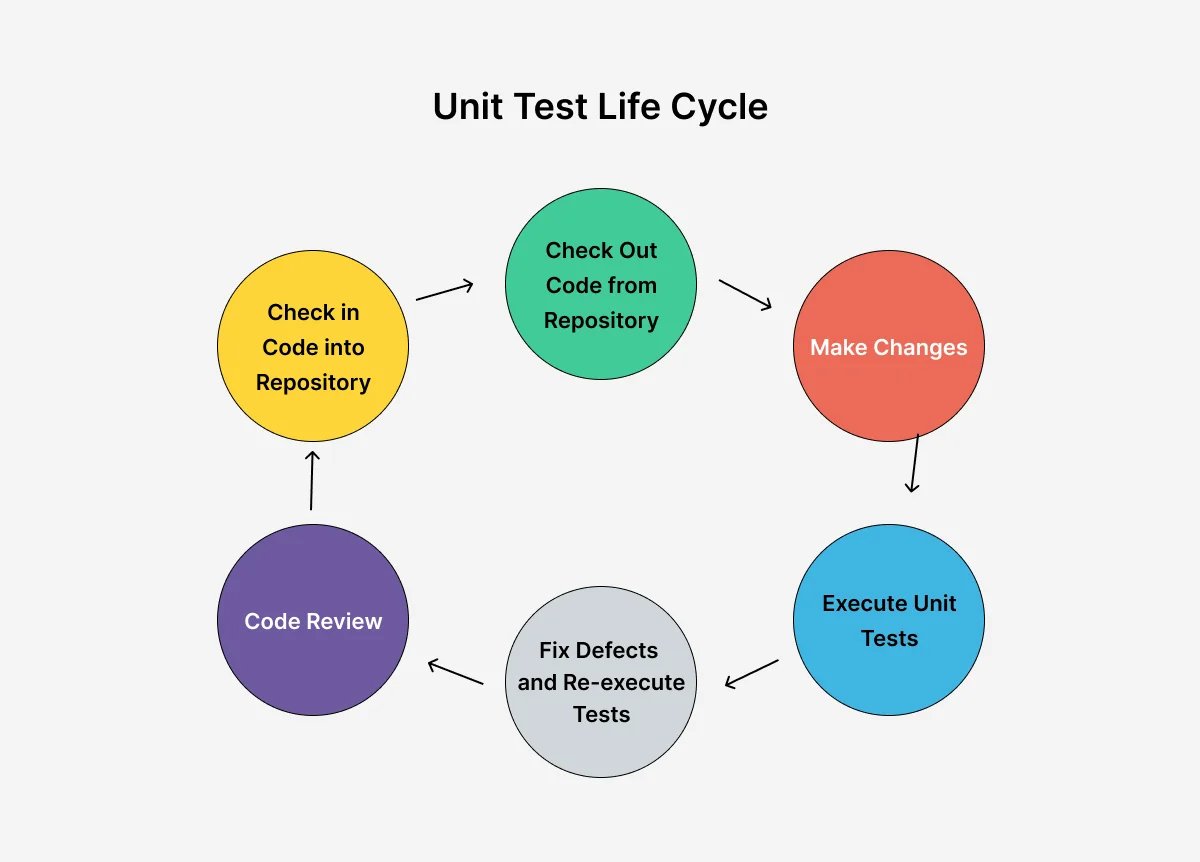
This stage of testing is particularly easy to automate. Developers only need to write the test scripts, then specify the number of test cases and let the program do the rest.
5. End-to-End (E2E) Testing
End-to-end (E2E) testing simulates the complete journey of an end user within an application. It meticulously assesses the functionality of various UI elements such as buttons, menus, navigations, and text inputs, ensuring seamless interactions. By comprehensively evaluating a user's journey from start to finish, E2E testing verifies the proper functioning of all integrations. Ultimately, this testing approach provides a robust indication of the application's readiness for production deployment.
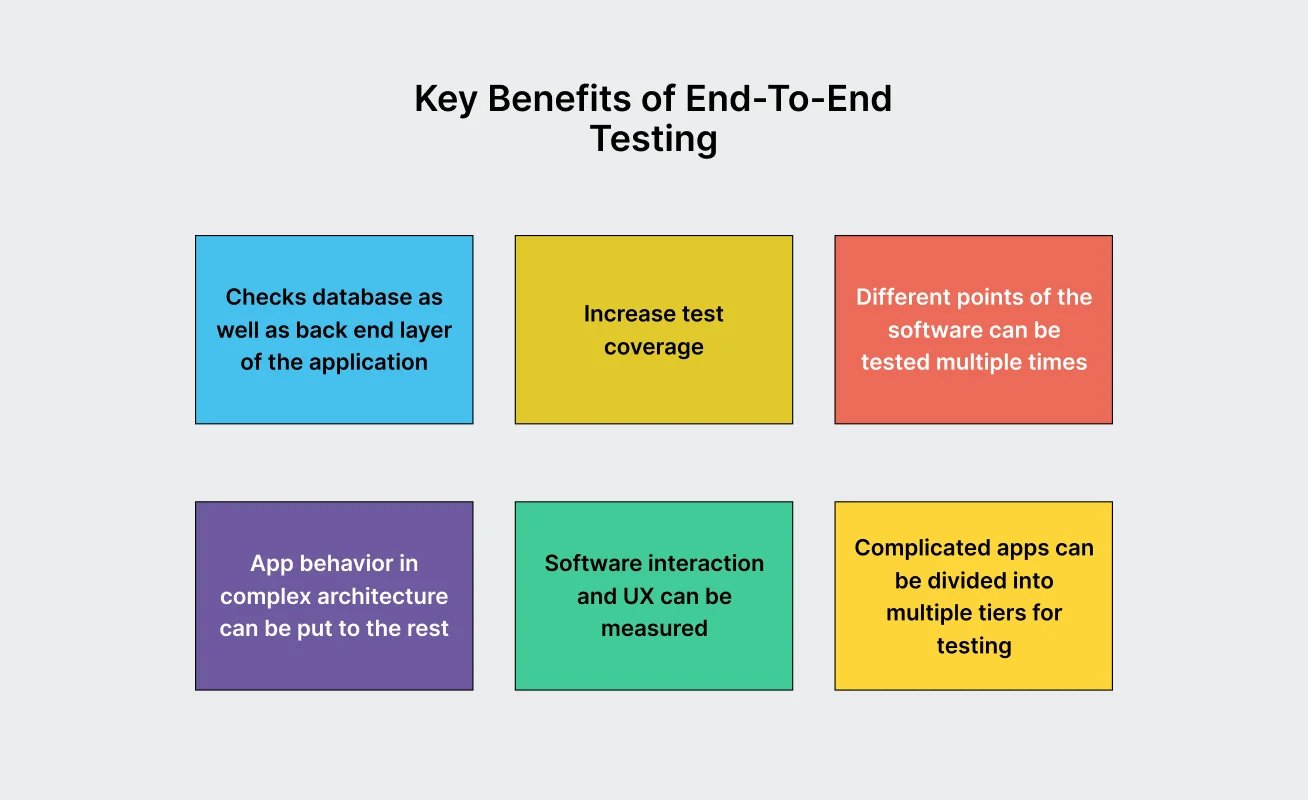
6. Sanity testing
Sanity testing, a variant of regression testing, verifies whether an application functions as intended after introducing new features or bug fixes. For instance, consider an email application adding a feature to mark emails as unread. In this case, sanity testing ensures that the marked emails appear distinct from read ones.
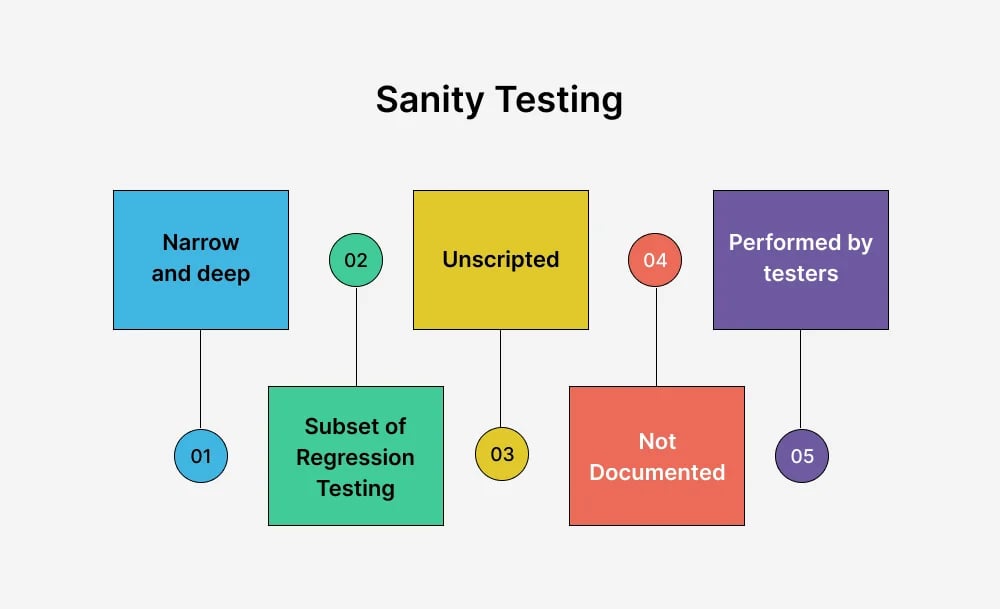
This testing methodology focuses on essential functionalities, determining whether further comprehensive testing is warranted. While it's extensive in breadth, sanity testing typically doesn't delve into edge cases or error scenarios. Instead, it prioritizes validating typical user interactions to ensure smooth functionality in everyday usage.
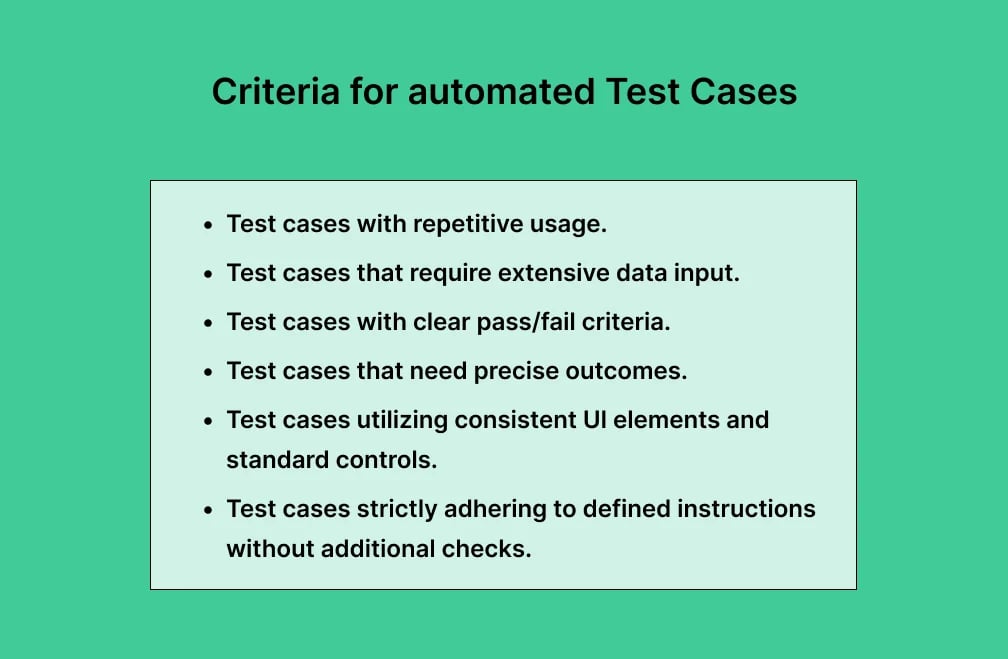
Functional Testing types less suitable for automation
While automation significantly enhances efficiency in functional testing, it's important to recognize that certain aspects rely heavily on human judgment and creativity, making them less conducive to automation.
- Exploratory Testing: Unstructured testing aimed at discovering defects through spontaneous exploration.
- Usability Testing: Evaluating the user-friendliness and intuitiveness of the application.
- Accessibility Testing: Assessing the application's usability and compatibility for users with disabilities.
- Ad Hoc Testing: Testing performed without a predefined plan or structure, often used for quick checks or immediate feedback.
Why should you automate Functional Testing?
There are many reasons to automate your software testing. Essentially, it boils down to this: increased automation improves efficiency. It's represented clearly in this graphic, which shows some of the biggest benefits of giving tasks to AIs instead of doing them manually:
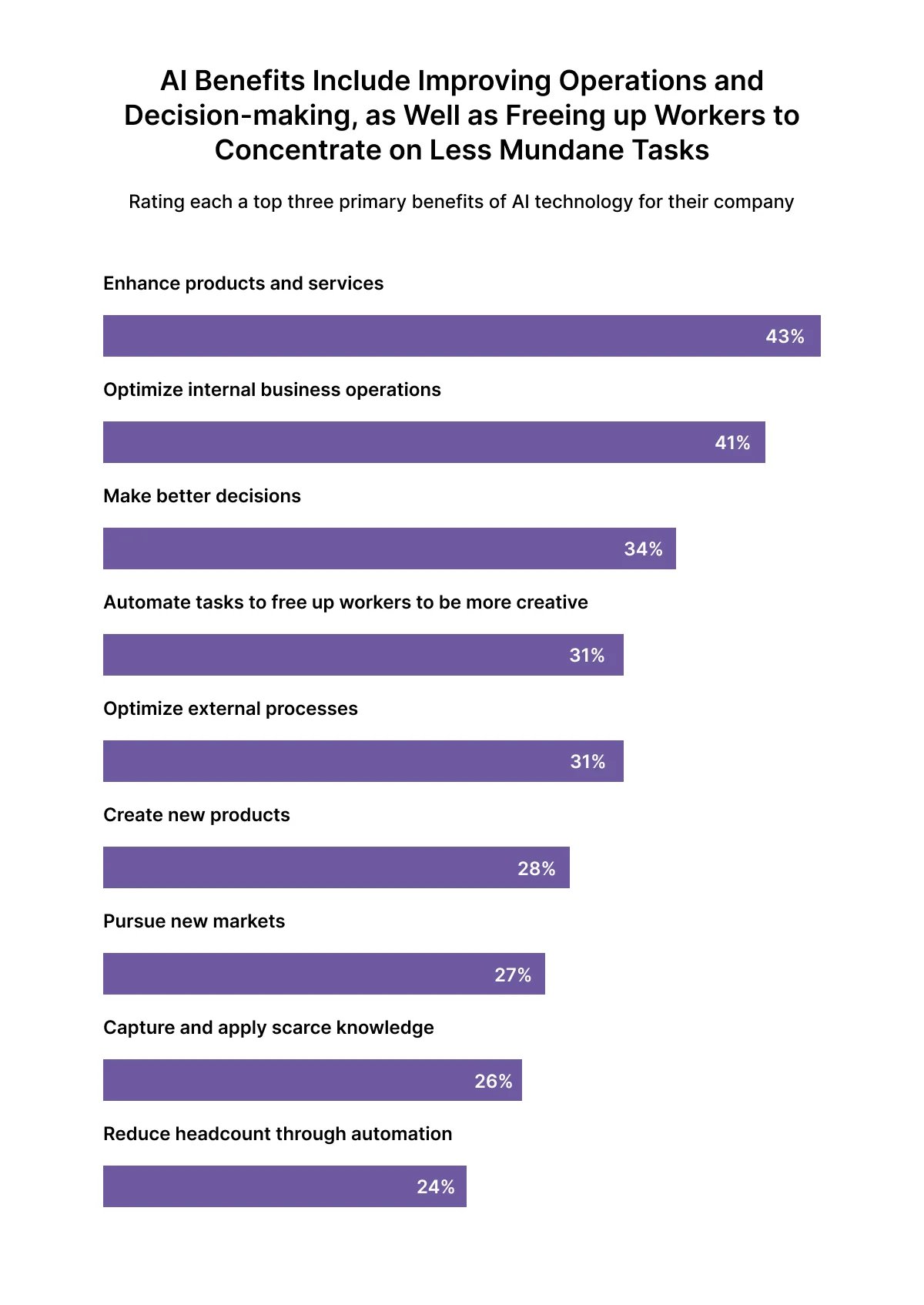
Benefits of Automated Functional Testing
The benefits of automated functional testing are many and varied. That's why we'll consider some of the most important advantages one by one.
1. Automation speeds up the testing process - Developers have more time to deal with bugs, lowering the likelihood of creating quick fixes that don't properly address the root of the problem. In other words, speeding up the testing process means developers have the time to get things done correctly.
2. It allows for as many test cases as necessary - With automated testing, companies aren't in any way limited by the limits of their manual testers. Instead, they can increase the number of test cases covered daily to any level they need to.
3. The testing process will run like clockwork - That means that time management becomes significantly easier since everything will go perfectly according to plan in terms of how long things take.
4. It reduces reliance on testers - When you rely on testers, you may run into trouble. Human distractions—from illness to holidays—will affect your schedule. Automation, on the other hand, will always perform exactly as you want it to.
5. Improving the quality of your apps becomes easier - Testing often is a great way to boost the quality of the final products. By using automated testing, you can drive your company's growth through product quality.
6. Automation gets you all the feedback you need - All you need to do is program the script to deliver feedback on each test case and then plug in the test cases. As simply as that, your developers will have all the feedback they need at their fingertips.
Pro tip
To streamline the test case management process, we offer various features to simplify test case creation, execution, and analysis. Whether converting existing test cases, generating new ones, or launching tests from popular workflow software through our platform, we aim to accommodate diverse testing needs and fit seamlessly into existing workflows across all stages of the software development lifecycle (SDLC).
Additionally, we provide thorough and actionable results, including full product overviews, deep bug analysis, and incentives for critical bug discovery, ensuring high product quality and user satisfaction.
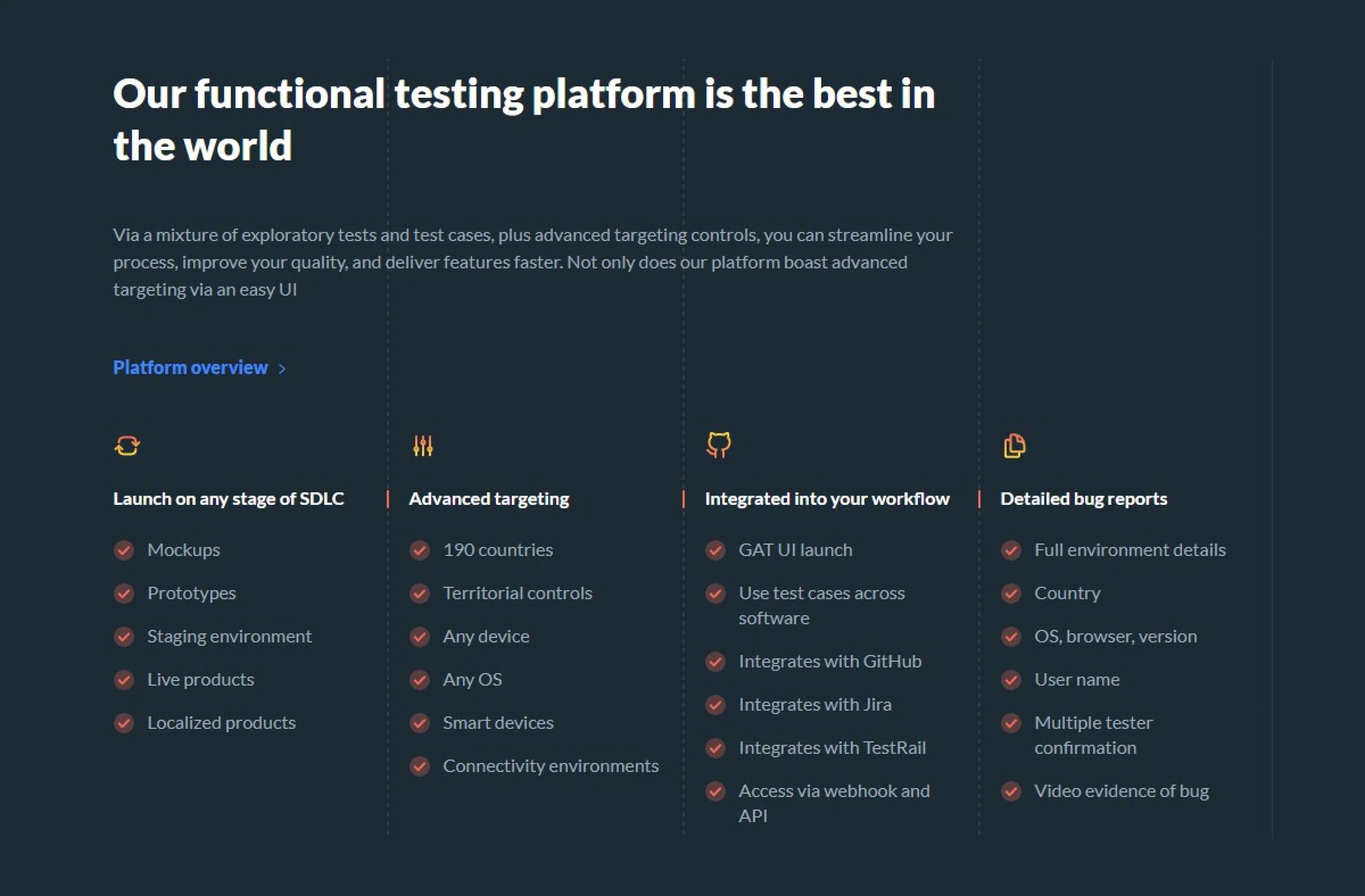
Common challenges in Functional Testing
As with any step in the development process, functional testing does come with challenges. Here are a few to watch out for:
- Covering enough test cases. If you run a successful test once, you can only really conclude that that one test case happened to be bug-free. To guarantee a high standard of app quality, developers have to run a lot of test cases, which can be difficult.
- Getting a good amount of feedback. Developers can provide themselves with feedback, but it will always come from a biased point of view. Getting objective, outsider-point-of-view feedback is an obstacle many developers must overcome throughout the functional testing process.
- Testing quickly. The testing process can be time-consuming and lengthy, making it challenging to run through enough tests to say that all major bugs have been eliminated safely. That means that functional testing can lead to unexpected delays in the release cycle.
- Finding as many bugs as possible. Not every testing solution is equally efficient at rooting out bugs. Sometimes, tracking down those final elusive bugs has nothing to do with the test execution or even the test itself; those bugs might just happen to only show up under highly specific, difficult-to-predict circumstances.
- Budgeting appropriately. Sadly, functional testing can't generally be done for free. That means that developers have to budget correctly and that they may have to adjust the tech budget anytime a sudden change happens.
- Scaling. The more human labor involved in the testing process, the more difficult it becomes to scale effectively and quickly. That's why scaling is a common challenge in functional testing (and test management).
- Ensuring smooth integration. If developers want to implement continuous integration of new functionalities, all testing has to be done to the same high standard. This can be difficult to achieve in a realistic testing environment.
Automated Functional Testing methodologies
Broadly speaking, there are three distinct automated functional testing methodologies that developers can use. Each one has its own advantages and is subtly different. However, it's worth noting that considering multiple testing methodologies in your automated functional testing approach increases your chances of finding the perfect methodology for your company.
1. Keyword-Driven Testing
This type of testing relies on using simple 'keywords' that tell the functional testing tools exactly how to test the application. In other words, with this approach, testers enter keywords detailing which actions need to be performed on the apps being tested. It's important to note that these keywords—and the actions they trigger—are completely separate from the automated tool and the test scripts. They're simply commands that trigger certain events coded into the tools and the scripts.
-1.webp?width=1168&height=806&name=Untitled%20(21)-1.webp)
A major advantage of this methodology is that it's very user-friendly. Testers don't need to modify the script whenever they want to make something specific happen, nor do they need to change anything about the automation tool itself.
2. Data-Driven Testing
As the name suggests, this type of testing emphasizes data and lets that data determine the direction of the testing. The data-driven mentality is becoming increasingly appealing as the market size of big data increases. Data is becoming a very precious resource that's worth exploiting.
A data-driven approach to automated functional testing entails storing data in external files instead of hard-coding it into the test scripts. The most popular external file type to store that data in is a spreadsheet, which can then be used to create graphs and charts to conceptualize the contents of the data.
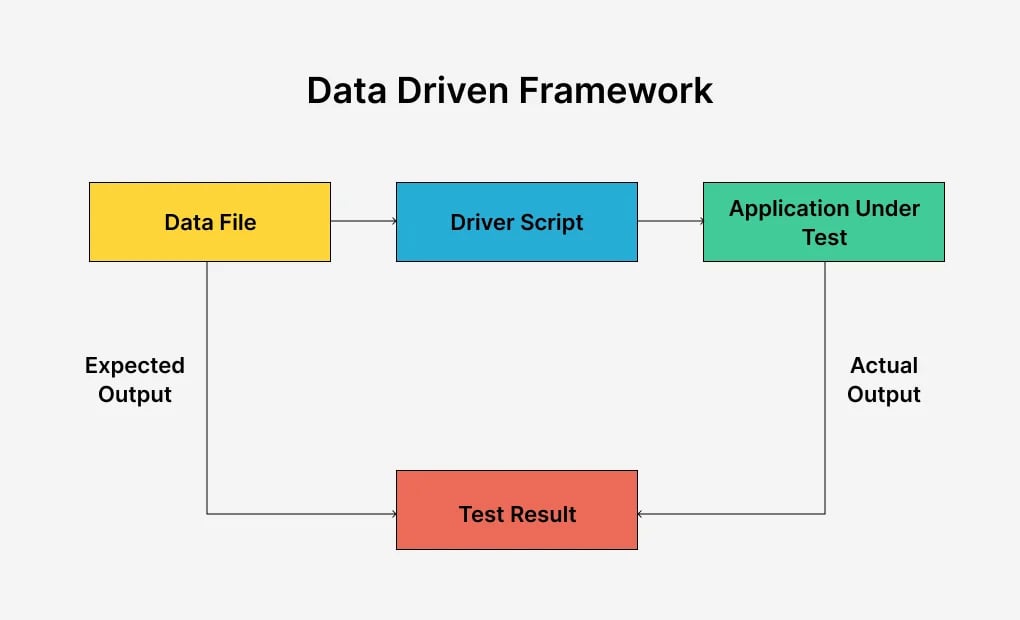
Since the data-driven test scripts aren't bloated with data, they're much more streamlined. This means that just one script can test every data value that needs to be tested. That's a major advantage; it spares developers the effort of writing many different scripts.
3. Frequent Testing
Frequent testing is the simplest type of automated functional testing, which, as the name suggests, simply follows the principle of running tests as often as possible. This methodology is compatible with multiple types of software testing, such as performance or cross-browser testing. Of course, it's a lot easier to run tests more often when you're using automated tools; automation lets you run far more tests in an hour than even the most highly trained manual testers can perform in the same amount of time.
The biggest advantage of adopting a frequent testing methodology is that you'll be more likely to discover bugs sooner, which means it's cheaper and faster to address them. Another bonus point is that more test cases mean fewer bugs slip through the cracks, meaning that your resulting software will be highly streamlined. Since this methodology relies on automation, it also creates no extra work to run tests more frequently.
Automated Functional Testing process
The process is surprisingly simple and can be completed in seven steps. These have been set out below.
1. Plan the process
The first step is to set the parameters of your functional testing process. What's the scope like? Which steps in the process are you going to automate? It's essential to have a concrete answer to both of these questions before you move forward. This is also the step when budgeting, expertise, and personnel are considered to formulate a solid plan.
2. Pick your automation tool
Now that you've got your plan, it's time to consider which tool(s) you want to use. Some of the most popular choices for automated functional testing are Cypress, Selenium, Puppeteer, WebdriverIO, NightwatchJS, Sauce Labs, and TestSigma. The plan will heavily inform this decision. Your chosen tool should be a great fit for the tasks you'll assign it to.
3. Design your testing framework
You've got a plan and picked your tools. The next step is to create the framework within which all of your testing will take place. That includes outlining the testing standards, defining which practices you'll be using, and choosing between data-driven, keyword, and frequent testing methodologies. Being thorough here can save time on test maintenance down the line.
4. Adjust the testing environment
In this step, you'll install the necessary hardware and software. You'll also want to set up the testing schedule so your teams can plan around it.
5. Write the testing script(s)
The scripts will be used to run the tests themselves, so before starting tests, make sure you've got your scripts ready. They should be written according to the project's needs, which you'll have defined in steps 1 and 3.
6. Run the tests
This is the most straightforward step. All you've got to do here is run the tests exactly how you planned!
7. Analyze the results
The tests are complete, and now it's time to analyze their results. At this point, you'll work with data. The data will tell you whether there are bugs and whether more testing is needed.
Automated Functional Testing best practices
In order to get the most out of your automated testing, there are a few best practices to bear in mind:
- Ensure you've optimized your software testing process. This is something most automation tools can help you with.
- Do your research. Not every tool is created with the same purpose. You'll have to put in the effort to find the right one for your business needs.
- Test your testing tools. It sounds a bit redundant, but if there's one thing you take away, let it be this: testing is always a good idea. Apply that same principle to your approach to functional testing tools, and you'll find yourself trying a few out to find the perfect fit.
- Document the process. Take many screenshots and ensure you know what's happening at every step. This will make it easier to track down where problems originated if they do arise.
- Learn more whenever you can. There are online courses, webinars, and textbooks for almost everything, including automated functional testing. You can only benefit from earning online course badges and gaining more knowledge.
Pro tip
At GAT, we provide an array of valuable resources at no cost to you. Whether it's exclusive interviews with top industry professionals, informative webinars geared towards international expansion, or access to our comprehensive handbooks and guides, we offer everything your QA and engineering teams require for success.
Is automated functional testing the right fit for you?
Functional testing involves running a new build through rigorous testing to remove any possible bugs. Each step focuses on a different method for rooting out errors and flaws. When automation is introduced into functional testing, every process runs more smoothly. That's because automation takes the most repetitive parts of the testing cycle and ensures they all run to the same standard of excellence. It removes the problem of human error while streamlining and improving the actual testing process.
However, while automated functional testing offers many benefits, including efficiency, repeatability, and scalability, it may not fit every organization or project. Manual testing presents distinct advantages over automated testing in certain situations:
- It allows for comprehensive coverage of diverse test cases, ensuring a thorough evaluation of app quality.
- Manual testing facilitates gathering unbiased feedback from outside sources, aiding in identifying overlooked issues.
- Its flexibility enables quick adjustments to unexpected changes, ensuring smooth integration and minimal release delays.
How can Global App Testing help with functional testing?
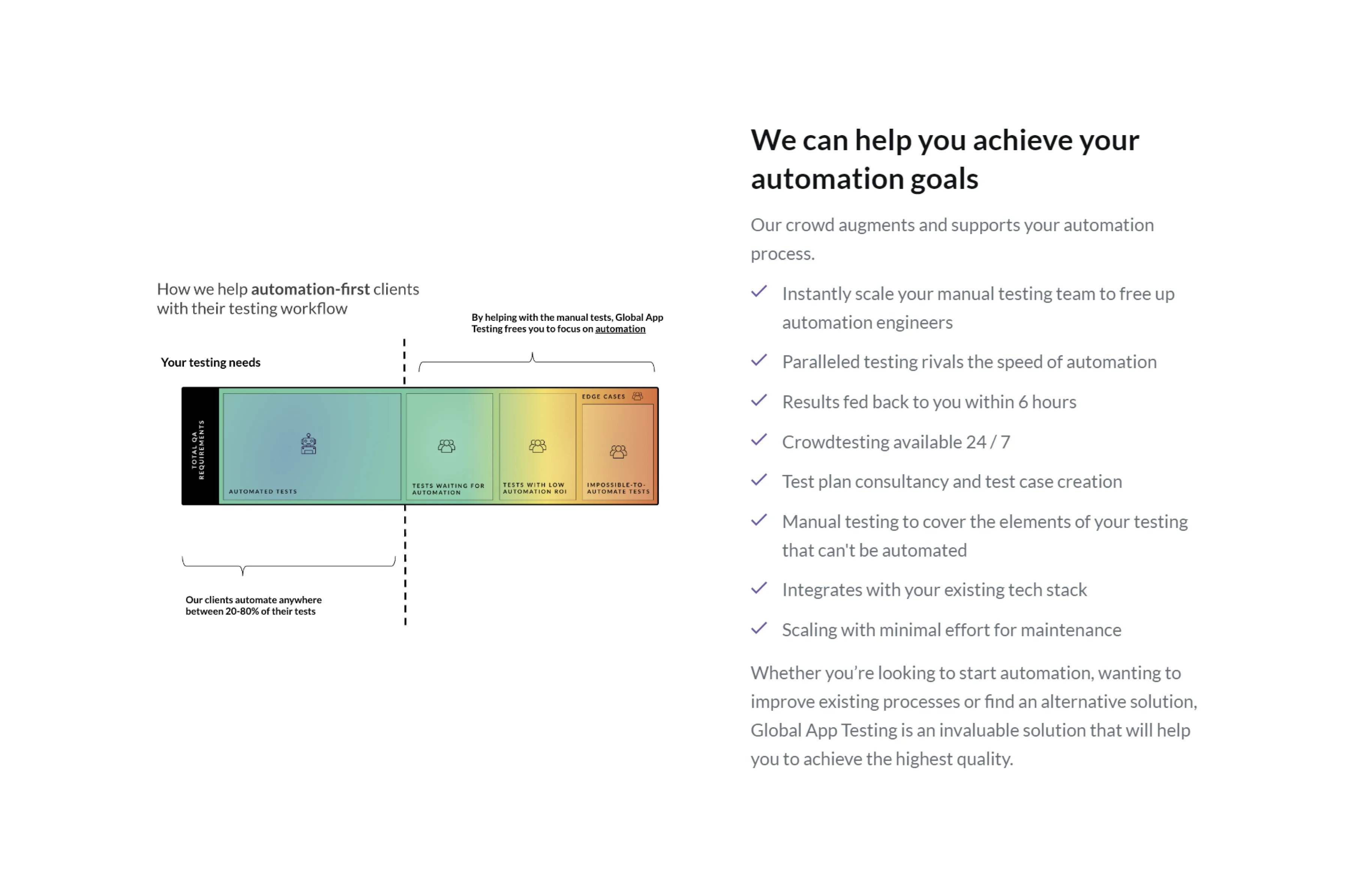
At GAT, our goal is to optimize your product's performance, accelerate your release cycles, elevate software quality, and ensure global compatibility:
- With 24/7 release cycles and 48-hour testing turnaround on complex tests, we help you eliminate unnecessary delays from your sprint, enabling faster feature delivery and enhanced agility.
- Easily scale up your QA capacity to meet peak demands, ensuring you can handle sudden spikes in testing needs without compromising quality or timelines.
- From mockups and prototypes to live and localized products, our platform supports testing at every stage of the software development lifecycle (SDLC), ensuring comprehensive coverage throughout your product's evolution.
- With access to 190 countries and 90,000 testers, compatibility across various devices and operating systems, and connectivity environments, our platform empowers you to target your testing precisely where it matters most.
- Seamlessly integrate our platform into your existing workflow through our user-friendly UI, integration with software tools like GitHub, Jira, and TestRail, or via webhook and API access.
- Receive comprehensive bug reports containing full environment details, user information, multiple tester confirmations, and video evidence, enabling efficient bug resolution and issue tracking.
- Conduct internationalization and localized functional testing to ensure global readiness and payments, guaranteeing your product's compatibility and usability across diverse regions and markets.
Partner with us and unlock the full potential of your software products today!
FAQ
What is functional and non-functional testing?
Functional testing evaluates the application's processes against specific requirements or specifications, ensuring it functions as intended. Non-functional testing examines aspects of the application, such as performance and reliability under load, which contribute to the overall end-user experience but are not directly related to functionality.
What are the key components of a functional test case?
Functional test cases typically include test objectives, preconditions, test steps, expected results, actual results, and any relevant notes or observations.
How do you select test cases for functional testing?
Test cases for functional testing are selected based on factors such as priority, risk, complexity, and requirements coverage, ensuring thorough validation of the application's functionality.
What are some best practices for conducting functional testing?
Best practices for functional testing include clear requirement understanding, comprehensive test planning, early defect detection, automation where applicable, and continuous improvement based on feedback.
How does functional testing contribute to overall software quality assurance?
Functional testing is crucial in ensuring that the software meets user expectations, complies with functional requirements, and delivers a seamless user experience, enhancing overall software quality and reliability.
Keep learning
Android app penetration testing - A detailed guide
The only functional testing checklist you need
11 Mobile testing trends you need to know about


